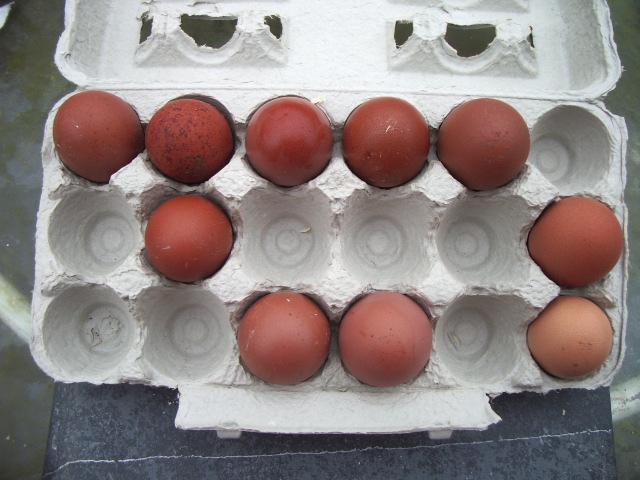ive had crossed lines for over 2 years on wheaten and saw no egg color loss , after all wheaten came from crossed colors or sports
Quote:
Its been my experience that when you cross lines, you do lose egg color.
I didn't believe it, so I did it. What I got were some really nice pullets, god awful cockerels, some pullets with mossiness, and lost egg color on the resulting crossed pullets. I still had some pure lines that I didn't cross.
What I did, was breed the nice pullets back to a rooster that wasn't crossed and was from my original line, Davis, and went from there. I culled all the mossy birds, and hoped for the best.
Now, 2 years later, I'm back with dark eggs, and no mossiness, and some of the best roosters I ever bred. Did the crossing help? I'm not sure. I didn't lose type or size, probably got a little more vigor. Was it worth it? I don't know. It wasn't worth the loss of egg color though, that was a big dissapointment for that time.
My advice would be, if you want to try to cross lines, just do it with a few of your birds, not all. Then see what you get. I thank my lucky stars that I had kept a few birds alone, and had a rooster that I could breed the crossed hens to to bring them back to again to the Davis line with just a little bit of the other line I crossed with.
Sue
http://rarechickens.blogspot.com/
This subject came up on the Marans Yahoo blog, Bev Davis responded and said egg color was affected when lines were crossed. She added that no one knew why this happened.
My advice would be to keep your existing line and your new blood line separate and create a third line using birds from the two lines .... assuming you have space for a third line.









